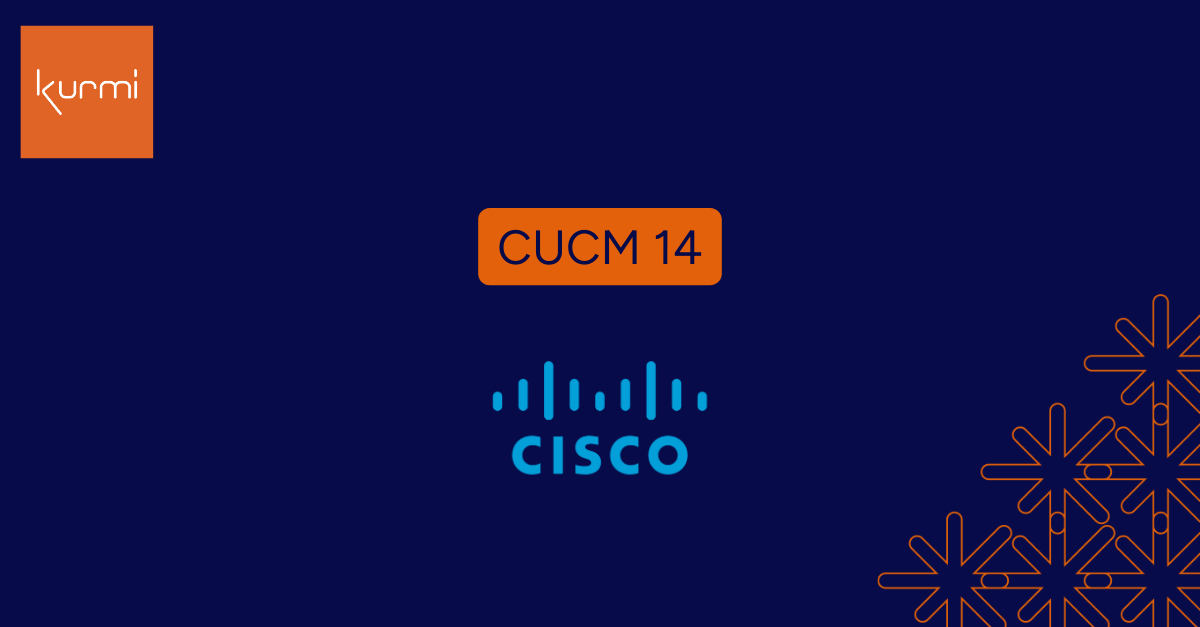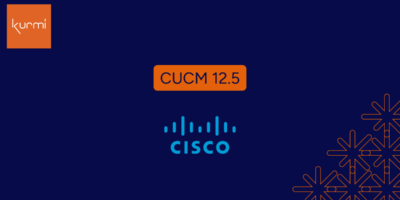With the release of its latest version of Cisco Unified Communication Manager – CUCM version 14 – Cisco has further extended the capabilities of its leading on-premises unified communications and collaboration platform.
It’s no secret that Cisco is actively encouraging users to migrate to cloud calling and contact center. But it is maintaining development of its on-premises platform, for now at least. The company has announced the end-of-sale date for Cisco on-premises calling applications, including CUCM, version 12.5 for August 31, 2023.
New on-premises clients are being recommended to deploy CUCM version 14, and existing clients are being advised to renew or add version 12.5 to their existing Flex subscription by the August 31 cut-off date with a view to adopting version 14 in due course.
Kurmi has extensive experience in supporting Cisco CUCM clients. When Cisco released version 12.5, we wrote about the key features in our blog. We thought we would take a look at the new features users can expect from CUCM version 14, to give you an idea of the benefits of upgrading.
In CUCM version 12.5, Cisco’s key objectives were to simplify administration and reduce the total cost of ownership. With CUCM version 14, Cisco is looking to do quite a bit more, notably:
- Provide a richer user experience
- Simplify administration and enable greater workloads
- Improve security
- Enhance business and operational insight
Let’s look at some of the key enhancements in Cisco Unified Communication Manager version 14.
Richer user experience
The user experience is everything – for us at Kurmi, that extends to the UC administrators as well, of course.
CUCM version 14 includes the flexibility to move a registered phone from office to home, without having to repeat an onboarding process.
Call persistency is important. Agents and their callers want to ensure that calls don’t drop out mid-conversation with a network change. CUCM version 14 looks after this by supporting LTE to WiFi to give users on the Webex app additional flexibility to switch between networks without disconnecting active calls.
Simplified administration workloads for increased registration and login rates
CUCM 14 has been enhanced to provide improvements in usability and can scale efficiently to handle deployments with very high numbers of nodes, clusters and/or tasks. This could present additional administrative overheads, but Cisco has thought of this.
With CUCM version 14, Cisco has increased cluster capacity to allow more devices to be supported without needing additional resources.
A standard cluster now supports registration of 50,000 devices, while a mega cluster supports twice this number, 100,000 devices. Extension Mobility cross-cluster (EMCC) enables enterprises to scale EMCC to more users by supporting 7500 user logins.
Login rates have also increased: a 10,000-user open virtualization archive (OVA) now has a login rate of 150 per minute, up from 90.
Operational workflows are simplified by managing all certificates from a single portal
Enhanced security
Security and compliance are critical priorities for Cisco. They have been a key focus for this latest release which has undergone Cisco’s Secure Development Lifecycle process (CSDL) to improve security across a number of areas:
- Administrative access security
- Application security
- Threat surface reduction
- Logging and auditing
- Web security (Xss, injection vulnerabilities)
- Privacy and data security
- Vulnerability Management
- Cryptographic support (X.509)
Greater business and operational insight
Intelligence for business decision making comes from accurate, trusted data. CUCM version 14 provides valuable, actionable insights through its analytics module.
The module provides data from Webex Cloud-Connected UC analytics reports, endpoint and headset KPIs and deployment distributions, as well as key data about the quality, status, count and duration of calls. Equipped with these insights, business leaders can make informed decisions about where best to deploy resources and where AI could make an impact to maximise their return on their unified communications investments.
Conclusion
The essential takeaway from Cisco’s continued focus on its on-premises CUCM solution is that it constantly being improved to meet customers’ requirements. Version 12.5 may be coming to end-of-sale date, but Kurmi is always on hand to enable end-user organizations and managed service providers (MSP) to maximize the value of their CUCM investment. That could be through planning your upgrade to CUCM version 14 or migrating to a cloud-hosted solution. Kurmi Provisioning Suite provides a single pane of glass to manage your entire Cisco UC ecosystem – as well as Microsoft Teams and Teams Phone, Zoom, Avaya Aura and Avaya Communications.
Request a demo here.



